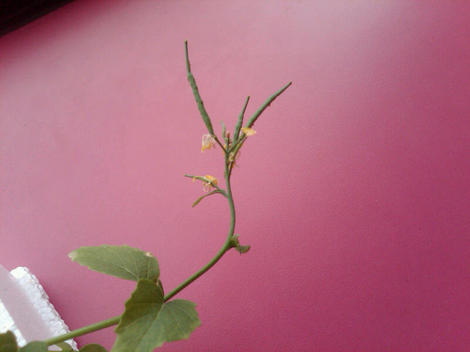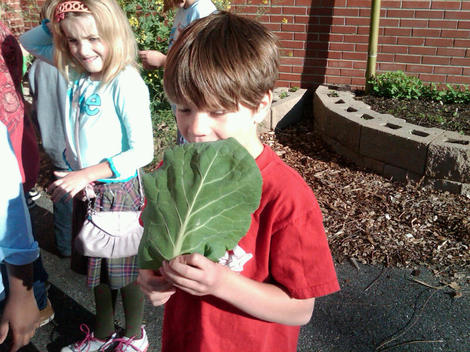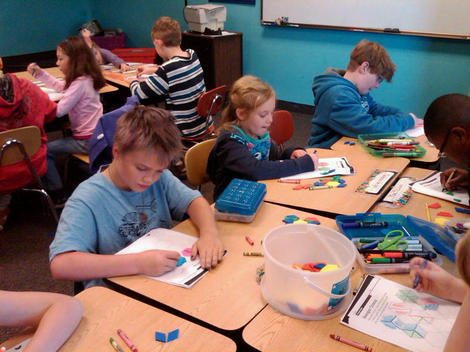*Please excuse the cell phone photos on this post - it's better than nothing, right?*
We have seed pods! After a rocky start with our indoor Brassica plants, we have made it all the way back to seeds!
It has been fascinating to see the whole life cycle of the plant from seed back to seed. The plants survived bad seeds, spring break, and an aphid infestation!
Yesterday we went outside and planted three varieties of beans. Ask your child if they remember the names of the beans we planted. We also munched on swiss chard, lettuce and kale that we planted earlier.
In math, we are using pattern blocks to study fractions.
The students are using the blocks to come up with many different fraction sentences that equal one.




Comments (7)
Sophie made a salad for us out of the greens she brought home. I never ate chard in a salad before. It was tasty!
What fraction of brassica plants have been attacked by aphids?
Posted by Rebecca Garau | April 15, 2011 1:13 AM
Posted on April 15, 2011 01:13
Wow! you guys have bright green thumbs! seeds on the brassicas and yummy looking greens in the garden! What will you do with the brassica seeds? Give them to next year's third grade? I hope lots of you guys come play the noodle game tomorrow at Spring Fling and keep me company while I'm volunteering!
love,
Roman's mom, Betsy
Posted by Betsy Towns | April 15, 2011 2:17 AM
Posted on April 15, 2011 02:17
Wow, I love seeing how hard at work you all are! You have a great teacher, make her proud Pretty Posises!
Posted by Erin Webster | April 17, 2011 1:01 AM
Posted on April 17, 2011 01:01
I am playing a lot of video games today my brain feels numb. I am glad the casting call is over.I really like neb eating a brassica leaf.
Posted by addison webster | April 17, 2011 1:13 AM
Posted on April 17, 2011 01:13
Those fraction blocks are cool!
I noticed the commutative property of addition in your fraction sentences. Are there other operations with this property?
Warning, mandatory sturgeon reference coming...
Part A: If several sturgeon want to divide up a meal evenly, could they use one OR MORE fraction blocks to build a model of the food for even division? (Any solution will do, but ones minimizing the number of cuts would be nice.)
Part B: Suppose they would like to divide the food up based on their relative weights too so that the bigger sturgeon get more to eat than their smaller buddies.
How might the sturgeon solve these gastrophilic issues?
Posted by Scott Robinson | April 17, 2011 4:35 AM
Posted on April 17, 2011 04:35
I sure love that leaf!
Posted by Ben LeFevre | April 21, 2011 10:39 PM
Posted on April 21, 2011 22:39
I think using manipulatives in math helps students conceptualize numbers better by both building number sense necessary for later math operations and giving students kinetic muscle memory to draw upon when they need to use the skill in tne abstract again later.
Posted by Tamara Kessler | May 5, 2011 5:46 PM
Posted on May 5, 2011 17:46